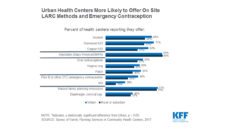Women have many options when it comes to deciding what form of birth control to use. Contraceptives can be hormonal or non-hormonal, reversible or permanent. Women can choose from devices and medications administered through the skin, vagina, uterus, muscle, or mouth. Contraceptives also vary by frequency of required use. Some forms, like birth control pills, must be taken daily, whereas patches are replaced weekly. Injections are taken every three months, and implants or intrauterine devices can last three years or more. Contraceptive methods also include procedures like tubal ligation and behaviors like outercourse.
Given how complex contraception choice can be, researchers conducted a study to understand American women’s contraception journey from their first prescribed method to current use, including women’s reasons for choosing, stopping, or switching methods.
Through a national-representative survey of 3,104 women aged 16-50 years, researchers found oral contraceptives were the most frequently prescribed method as a first form of birth control. Women were, on average, 19.5 years old the first time they used contraceptives. Fifty-five percent of the women reported initiating the conversation with their health care provider about starting prescription contraception. In other cases, clinicians (27%) and family members (11%) prompted the discussion. Forty-five percent of the women surveyed also reported using contraceptives for reasons other than avoiding pregnancy, including menstruation regulation and acne treatment.
Overall, two-thirds of women had experience with oral contraceptives, 15% reported using with progestin injections, and 13% had tried IUDs. Other methods used included implants (4%), patches (7%), and vaginal rings (7%). One in six women have had a tubal ligation, a permanent contraception procedure.
The study’s authors maintain that strengthening existing interactions with health care providers is essential to ensure that women make informed decisions about their choice of contraception.
As women shifted from their first prescribed method to their current form of contraception, more women chose IUDs, a method whose use has traditionally been low in the US. Fifty-six percent of contraceptive users continued to use their first prescription contraception throughout their reproductive life. Women using oral contraceptives were more likely to switch methods due to frequent missed doses. Studies have found that women miss more than four pills each cycle on average.
Lack of counseling was another major finding from the study on women’s contraception journeys. Only half of respondents received counseling on a variety of methods, half on how to use specific methods, and 58% on how their periods would change. Two-thirds of women were counseled on potential side effects, but only 28% felt that reproductive health and the role of hormones were explained well.
Most contraceptive users chose their current prescription for contraception based on their own research, obtaining information most frequently from the internet and friends and only rarely from a pharmacist or a physician.
The study’s authors maintain that strengthening existing interactions with health care providers is essential to ensure that women make informed decisions about their choice of contraception. In addition to providing information on the safety, effectiveness, accessibility, and affordability of different contraception options, clinicians can also conduct counseling that emphasizes side effects that are evidence based.
Photo by Reproductive Health Supplies Coalition on Unsplash














